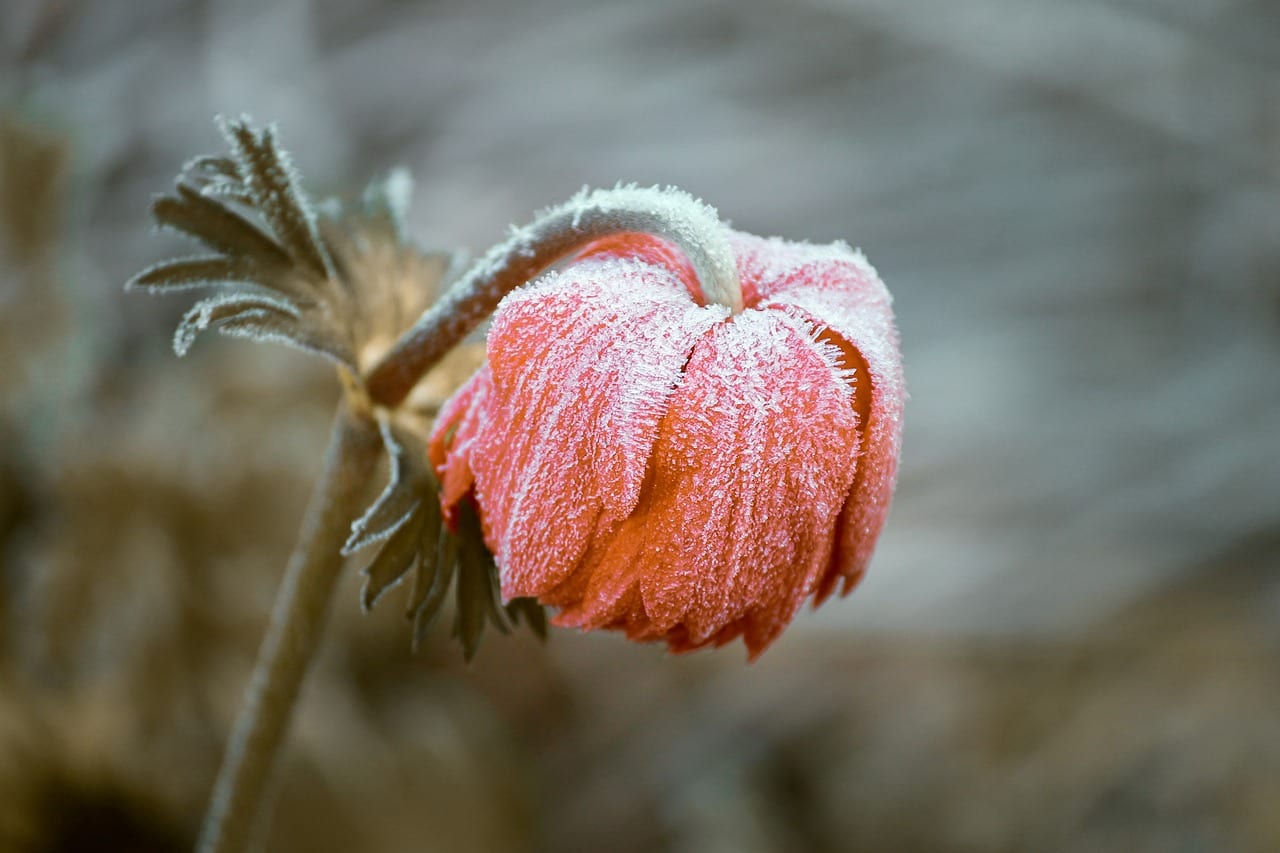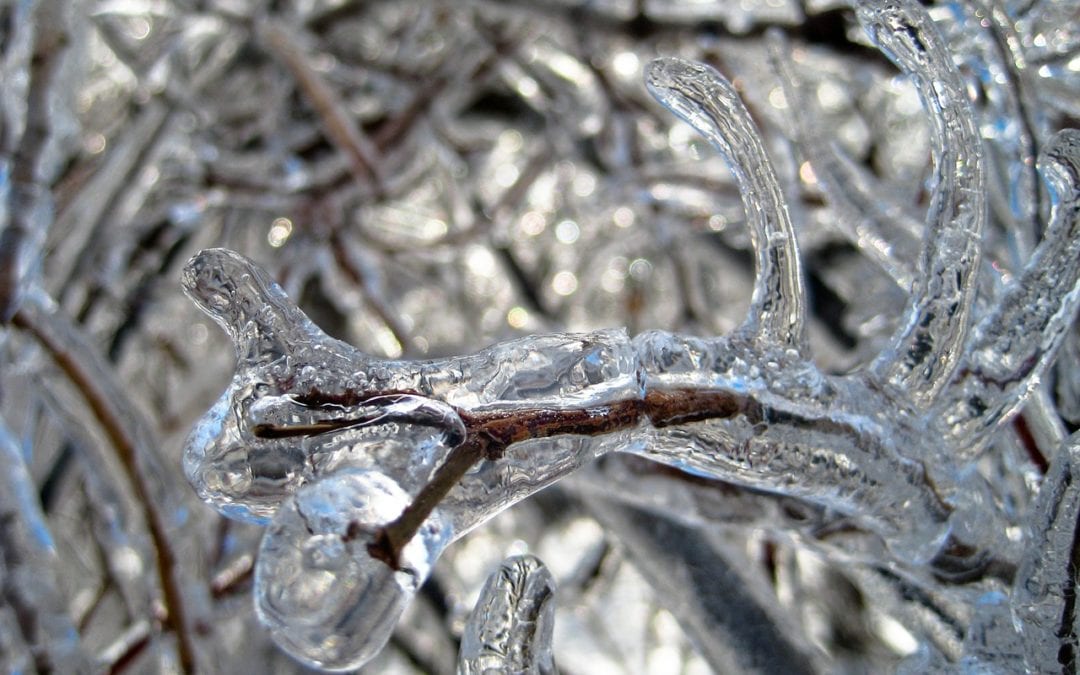Living in San Antonio, we are generally blessed with mild weather throughout the winter, but we still need to make some preparations for the occasional freeze that threatens the vitality of our plants. While it can be a pain to cover and uncover your plants throughout the duration of a freeze, your plants have been an investment in money and hard work. Not protecting your plants from a freeze is basically like throwing away money and all your hard work will have been for nothing!
What happens when plants freeze? When the temperatures get down to 28°F it can cause the water that is inside of plants to form ice crystals that pierce the cell walls of plants. The cell walls begin to leak their fluids and turn to mush as the plant begins to die once the temperatures rise back up again to above freezing. The longer the plant is exposed to freezing temperatures the more damage it will sustain. Again, in San Antonio we generally don’t have long periods of freeze, but any exposure to freeze can cause damage or death so best to take all of the following precautions when a freeze is predicted.


5 Techniques to Protect Plants from Freeze Damage in San Antonio
1. Water your plants before a freeze.
Why would you water a plant before a freeze? It seems counterproductive right? Water turns to ice when it freezes, we try to protect our plants from freeze damage, so why on earth would we water before it is going to freeze?
When you water the soil of your plants before a freeze is predicted, it actually creates warmth in the soil that is slowly released throughout the course of the evening of the freeze. As drought stressed plants are more susceptible to freeze damage, watering your plants before a freeze can mean the difference between life and death for your plant. Make sure your plants are watered a day before a freeze is predicted, or at least the morning of the freeze.
2. Cover your plants before a freeze and uncover once the freeze has passed.
Covering your plants with frost cloth, old sheets, blankets, etc… is perhaps the most practical and easiest way to protect your plants from a freeze.
The first golden rule to remember when covering your plants is that you must cover with fabric first and then plastic if you desire. Never put plastic only on a plant. Plastic can actually burn/freeze plant tissues where it touches them. Plastic can be great for holding in the warm air on a windy freeze night, but it must always have fabric under it first.
Make sure your sheets/frost protection drapes completely over the plant and hangs down to the soil. Secure the protection to the ground with rocks or something heavy so you don’t find your plant exposed and your winter protection blown into a neighbor’s yard the next morning.
The second golden rule to remember when covering your plants for freeze protection is to remember to uncover them the next day when danger of freeze has passed and the sun is shining. If you fail to uncover your plants on a sunny day following a freeze, you might end up burning them.
3. Add a heat source to plants more susceptible to freeze damage.
If susceptible plants are too big to bring inside to protect from freeze, along with the above protection techniques, you can also add an extra layer of protection by providing a heat source.
Stringing incandescent Christmas lights around the plant underneath fabric winter protection is an easy way to add a heat source. A mechanic light shining under the winter protection will work too.
Another way to add a heat source is to fill up some containers of water and place them next to the plants and cover completely with your fabric winter protection to keep wind out. The water containers hold latent heat that will release slowly under the sheets and blankets.
4. Bring potted plants inside to protect from a freeze.
Plants that are most susceptible to freeze damage are tropical plants, plants with new growth, and potted plants. Potted plants have not only their tops, but also their roots, exposed to possible freeze damage. The roots in container plants do not have the insulation provided by the earth and even plants that are generally more hardy can suffer root death when they in containers and subjected to a freeze.
If you have multiple containers and you cannot bring them inside, group them together so they can radiate heat amongst each other. It’s best if you can place them all alongside a protected area of your home and cover them.
5. Mulch your plants for protection from freeze.
We advise applying new layers of mulch each growing season. In spring it mostly helps to maintain soil moisture and in winter it mostly helps to regulate soil temperature, protecting your plants from a freeze. Even if your plant suffers freeze damage to the tops of its structure, with a layer of mulch around the plant’s crown, it may still survive and come back from its roots in spring.
Soil can be used to help protect citrus that is planted in the landscape. Mounding up lightweight soil, in the shape of a cone, around the base of the citrus tree’s trunk has proven to save the root systems of citrus trees sometimes. IMPORTANT…You MUST remove the soil from the base of the tree after the danger of a freeze has passed. If you do not remove the soil from the trunk you will risk causing the trunk to rot. Throughout the fall of 2020, both Rainbow Gardens locations have a mulch promotion. Buy 3 bags of any mulch and get a 4th bag free.
When the cold days of winter head in and you’re working through the tedious steps of protecting your plants, just remember: “No winter lasts forever; no spring skips its turn.” –Hal Borland
~The Happy Gardener, Lisa Mulroy


What should you do for two year old palm trees? Should you take any specific precautions?
Hi Tom,
If you have incandescent Christmas lights (not led, we want the ones that give off a little heat), wrap the lights up and down the trunk. Pile soil and mulch up the trunk as much as you can for the duration of the freeze, and then cover it all with blankets, securing sides to keep cold out.
So many landscapes are seriously damaged by this last winter disaster. Thinking it would be very helpful and welcome if you guys could publish some info and suggestions on how we might care for our plants. Suggested nutrients, pruning etc for most common plants (ie viburnum, sage, rosemary) would be fantastic. Thank you!!
Hi Mary Ann,
We put out one blog just recently with some of our tips for assessing freeze damaged plants and we will continue to advise throughout the weeks. It is important right now that everyone takes a little time to truly be able to assess freeze damage and allow plants a little time to rejuvenate and recover so that you can see exactly how much damage you have. Here is the link to our latest blog. Thank you for reading. Will My Plants Survive the Winter Freeze?
If it’s going to rain as the temperature starts dropping, do you let that be the watering or should I still water before that happens? If the former, when do I cover? Trying to get this all straight! Thank you!!
Hi Ashley,
Cover tonight! Cover tonight! The freeze is expected to arrive in the morning on Thursday. Generally you water the day or two before a freeze is expected, or at least the morning of. Watering now won’t do anything to insulate the plants, so just focus on covering them with old blankets and secure the blankets down so they don’t fly up in the wind and leave your plants exposed. Container plants can be grouped together to create more warmth and then covered. Best of luck to you!
After a freeze (knowing it’s not the last of the season), when should we uncover the plants (Lariope) after the frozen temps?
You can always uncover your plants (and should) when the sun comes out and the temps rise above your plants minimum cold tolerance. You might have to cover again if the temps are expected to drop below freezing. Keep that plant protection handy.